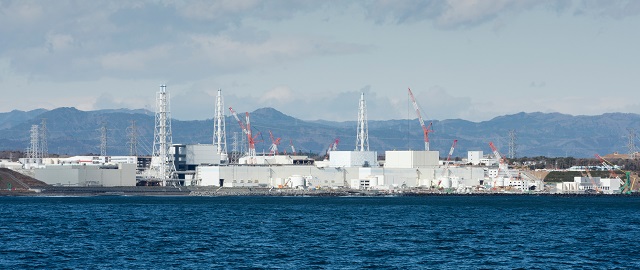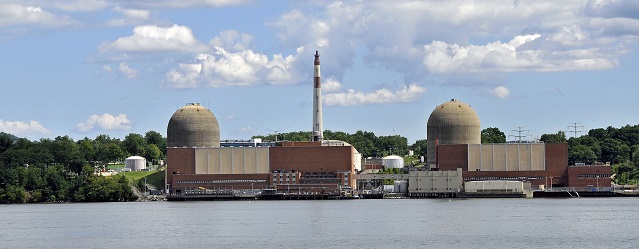Greenpeace Surveys Fukushima Site Five Years After Meltdown
The Fukushima Daiichi nuclear disaster occurred after a March 11, 2011, tsunami, and in the lead up to the five-year anniversary, environmental group Greenpeace Japan has commenced an underwater investigation into radiation contamination in the nearby waters.
More than 160,000 people were evacuated from the area after the disaster which is considered to be the worst nuclear accident since the 1986 Chernobyl disaster.
Greenpeace’s survey is being conducted from a Japanese research vessel using a ROV fitted with a gamma radiation spectrometer and sediment sampler. All samples will be transported to independent laboratories in Japan and France for analysis.
On the opening day of the investigation, Naoto Kan, the former Prime Minister of Japan and leader at the time of the nuclear accident, joined the crew of the Greenpeace flagship, the Rainbow Warrior, at the site of the survey.
As the country nears the fifth anniversary of the Fukushima disaster, Kan called for a complete phase out of nuclear power.
“I once believed Japan’s advanced technology would prevent a nuclear accident like Chernobyl from happening in Japan. But it did not, and I was faced with the very real crisis of having to evacuate about 50 million people at risk from the Fukushima Daiichi nuclear accident. I have since changed my mind,” said Kan on board the Rainbow Warrior. “We do not need to take such a big risk. Instead we should shift to safer and cheaper renewable energy with potential business opportunities for our future generations.”
 Fukushima plant
Fukushima plant
Operator Tokyo Electric Power Company (TEPCO) has produced over 1.4 million tons of radioactive contaminated water in an effort to cool the hundreds of tons of molten reactor fuel in Fukushima Daiichi reactor units 1, 2 and 3, says Greenpeace. In addition to the initial releases of liquid nuclear waste during the first weeks of the accident and the daily releases from the plant ever since, contamination also flows from land, particularly the forests and mountains of Fukushima, and will continue to contaminate the Pacific Ocean for at least 300 years.
“The Fukushima disaster is the single largest release of radioactivity into the marine environment in history. There is an urgent need to understand the impacts this contamination is having on the ocean, how radioactivity is both dispersing and concentrating and its implications,” said Shaun Burnie, Senior Nuclear Specialist with Greenpeace Germany.
In a statement released last week, TEPCO said that a public declaration of the meltdown should have been done within days of the disaster. It did not reveal that a meltdown was taking place for almost two months.
“TEPCO failed to prevent a multiple reactor meltdown, and five years later it’s still an ongoing disaster. It has no credible solution to the water crisis they created and is failing to prevent the further contamination of the Pacific Ocean.”
The investigations will continue into March and will take place along the coast of Fukushima prefecture, including within a 20 kilometer radius of the Fukushima Daiichi nuclear plant.
The team is working with scientists from the independent laboratory Chikurin-Shya in Tokyo and ACRO in France. The radiation survey is the 25th the organization has conducted into the impact of the Fukushima nuclear accident since March 2011.
“There is still no end in sight for communities in Fukushima, many of whom can’t return home due to radiation contamination. Rather than pushing for the restart of nuclear power, the Japanese government should put these people first and focus on managing the Fukushima Daiichi site,” said Mamoru Sekiguchi, Energy Campaigner with Greenpeace Japan. “Many people in Japan have rejected nuclear power and are demanding the only safe and clean technology that can meet Japan’s needs - renewable energy.”
Only three of the 54 commercial nuclear reactors that existed in Japan in March 2011 are currently operating. The Japanese government has set a target of 35 reactors to be operating by 2030, despite multiple technical issues and citizen led legal challenges threatening the revival of a nuclear “renaissance” in Japan.
Contamination in the U.S.

Indian Point nuclear power plant
The Fukushima anniversary has highlighted concerns in the U.S. Local media reports that the Indian Point nuclear power plant in New York State is leaking radioactive contaminant into nearby groundwater. Earlier this month, Governor Andrew Cuomo called for a full investigation by state environment and health officials. Leaks have been found at around three quarters of U.S. nuclear plants.
Cuomo said: “Yesterday I learned that radioactive tritium-contaminated water leaked into the groundwater at the Indian Point Nuclear facility. The company reported alarming levels of radioactivity at three monitoring wells, with one well’s radioactivity increasing nearly 65,000 percent. The facility reports that the contamination has not migrated off site and as such does not pose an immediate threat to public health.

that matters most
Get the latest maritime news delivered to your inbox daily.
“Our first concern is for the health and safety of the residents close to the facility and ensuring the groundwater leak does not pose a threat.
“This latest failure at Indian Point is unacceptable and I have directed Department of Environmental Conservation Acting Commissioner Basil Seggos and Department of Health Commissioner Howard Zucker to fully investigate this incident and employ all available measures, including working with Nuclear Regulatory Commission, to determine the extent of the release, its likely duration, cause and potential impacts to the environment and public health.”
